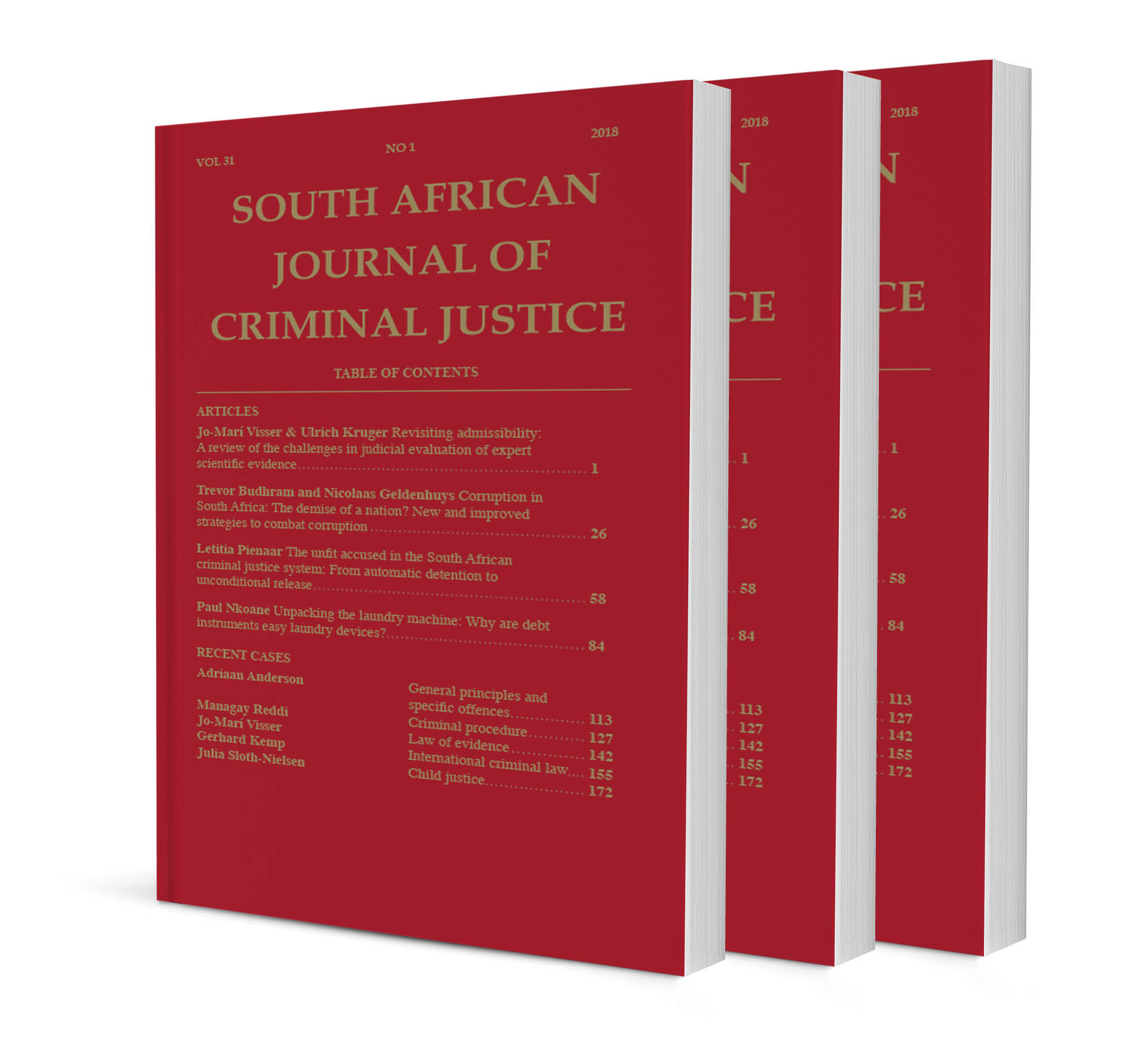Wenzeni uZuma: A jurisprudential study of the unlawfulness of corruption in Africa

Wenzeni uZuma: A jurisprudential study of the unlawfulness of corruption in Africa
Author: Tshepo Bogosi Mosaka
ISSN: 1996-2118
Affiliations: LLB (Wits) LLM (Cape Town) PhD (Nottingham), Lecturer in Public Law, Faculty of Law, University of Cape Town
Source: South African Journal of Criminal Justice, Volume 35 Issue 3, p. 285 – 306
https://doi.org/10.47348/SACJ/v35/i3a1
Abstract
In response to the multitude of corruption allegations levelled against him, former president Zuma and his supporters typically sing a song called ‘Wenzeni uZuma’ (‘What has Zuma done wrong?’). This paper takes up this question from a jurisprudential (theoretical) point of view; that is, by probing the various senses in which prima facie corrupt conduct can be said to be unlawful in Africa. This question is explored through the application of the conceptual machinery of argumentation theory and criminal law theory. This paper discusses the Feinbergian, positivistic, contractual, legal moralism and the argumentum ad ignorantiam senses in which prima facie corrupt conduct can be said to be unlawful. It is then argued that prima facie corrupt conduct should most appropriately be conceived of as being unlawful in the contractual sense that a designated official diverts a particular benefit away from a de jure beneficiary and towards a de faco beneficiary.